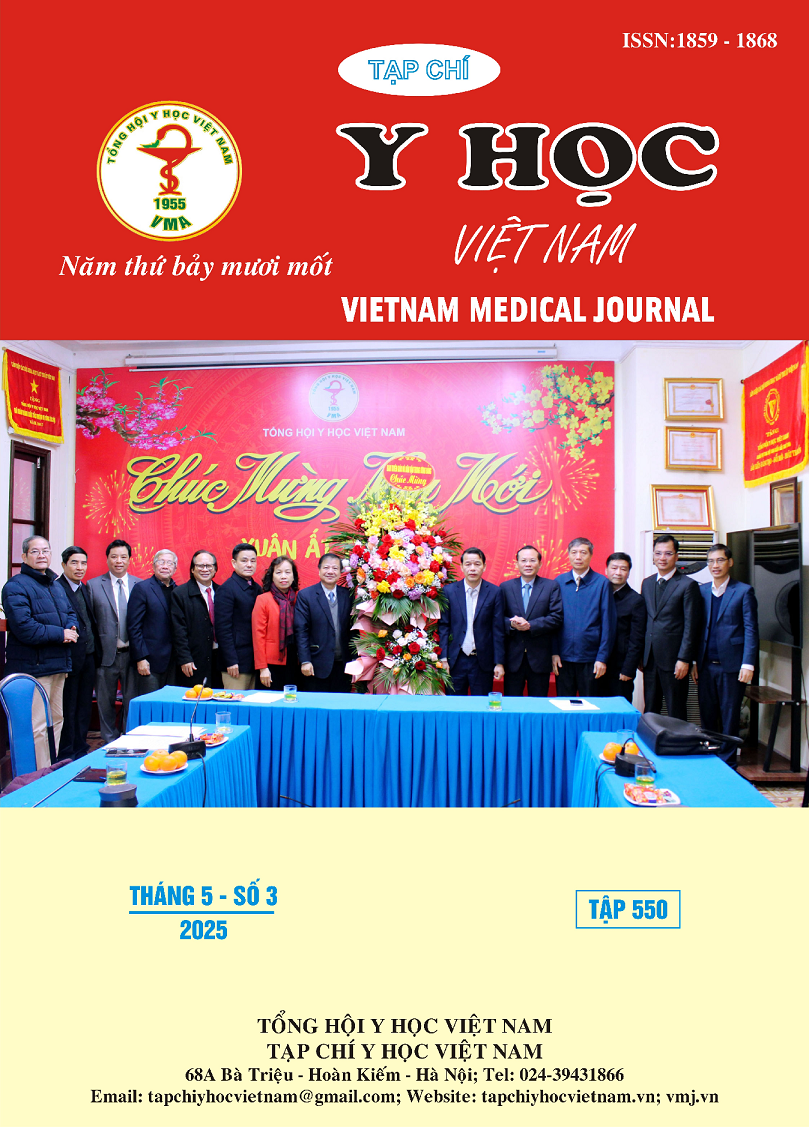FRAMEWORK FOR THE MANAGEMENT OF NEONATAL INFECTION AT THAI BINH PEDIATRIC HOSPITAL IN 2024
Main Article Content
Abstract
Objective: To describe the neonatal infection model treated at Thai Binh Pediatric Hospital in 2024. Subjects and Methods: A cross-sectional descriptive study was conducted on 1,034 neonates with infections treated from January to December 2024 in the Neonatology and Intensive Care Departments of Thai Binh Pediatric Hospital. Results: In the 2024 study on neonatal infections (NNI) involving 1,034 infants, the majority were full-term (75.4%), with a higher proportion of male patients (62.8%). Cesarean delivery was more common (57.4%), and the most frequent maternal risk factor was gynecological infections (17.3%). Regarding clinical symptoms, respiratory manifestations were the most common (75.6%), followed by skin and mucosal lesions (57.7%) and circulatory symptoms (20.6%). Some infants presented with fever (7.8%) or hypothermia (8.9%). Laboratory tests revealed leukopenia (< 5G/L) in 2.1% of cases, leukocytosis (> 25G/L) in 3.1%, CRP ≥ 10 mg/dL in 10.6%, and thrombocytopenia (< 150G/L) in 3.0%. Late-onset neonatal infection was predominant (76.8%), with pneumonia being the most prevalent condition (59.2%), while meningitis (2.0%) and sepsis (0.9%) were less common. The treatment outcome was favorable, with 89.7% of infants recovering, although 3.9% required transfer to another hospital, and 2.2% died. The average treatment duration was 12.84 ± 6.99 days. Conclusion: Neonatal infections primarily occur in full-term infants, with pneumonia being the most common condition. Treatment outcomes are favorable, but there is a need to further improve the quality of care to reduce transfer rates and mortality.
Article Details
Keywords
Neonatal infection, neonate, newborn
References
2. Seale AC, Blencowe H, Manu AA, et al, (2014). Estimates of possible severe bacterial infection in neonates in sub-Saharan Africa, south Asia, and Latin America for 2012: a systematic review and meta-analysis. Lancet Infect Dis;14(8): 731-741. doi: 10.1016/S1473-3099(14)70804-7.
3. Ngô Thị Hiếu Minh, Đặng Văn Xuyên, Trần Minh Điển. Một số đặc điểm dịch tễ học nhiễm khuẩn sơ sinh tại bệnh viện Nhi Trung Ương. Tạp chí Truyền Nhiễm Việt Nam, số 01(45).2024. Tr 47 - 53.
4. Trần Diệu Linh. Một số nhận xét về tình hình nhiễm khuẩn sơ sinh sớm ở trẻ đủ tháng tại trung tâm chăm sóc và điều trị sơ sinh bệnh viện phụ sản Trung Ương. Tạp chí phụ sản- 13(2), 118-121, 2015.
5. Siba Prosad Paul, Henna Khattak, Prashant Karkala Kini et al, (2022). NICE guideline review: neonatal infection: antibiotics for prevention and treatment (NG195). Arch Dis Child Educ Pract Ed 2022;107: 292–297. doi:10.1136/ archdischild-2021-322349
6. Trịnh Thị Thúy, Lê Kiến Ngãi, Ngô Thị Thu Hương. Nhận xét tình trạng nhiễm khuẩn sơ sinh tại bệnh viện Nhi Thanh Hóa năm 2022. Tạp chí Y Học Việt Nam, Tập 531, tháng 10, số 1. 2023, Tr 282 - 286
7. Kenza Hattoufi, Majdouline Obtel, Hassan Aguenaou et al. Early-Onset Neonatal Sepsis: A Retrospective Study among 1,119 Moroccan Newborns Admitted to the National Reference Center in Neonatology and Nutrition, Rabat, Morocco. Iranian Journal of Neonatology. 2021, 12 (4).
8. Nguyễn Hữu Sơn. Căn nguyên và kết quả điều trị một số bệnh nhiễm khuẩn sơ sinh thường gặp tại bệnh viện Sản Nhi Nghệ An năm 2022. Luận văn chuyên khoa II, Đại học Y Hà Nội, 2023


